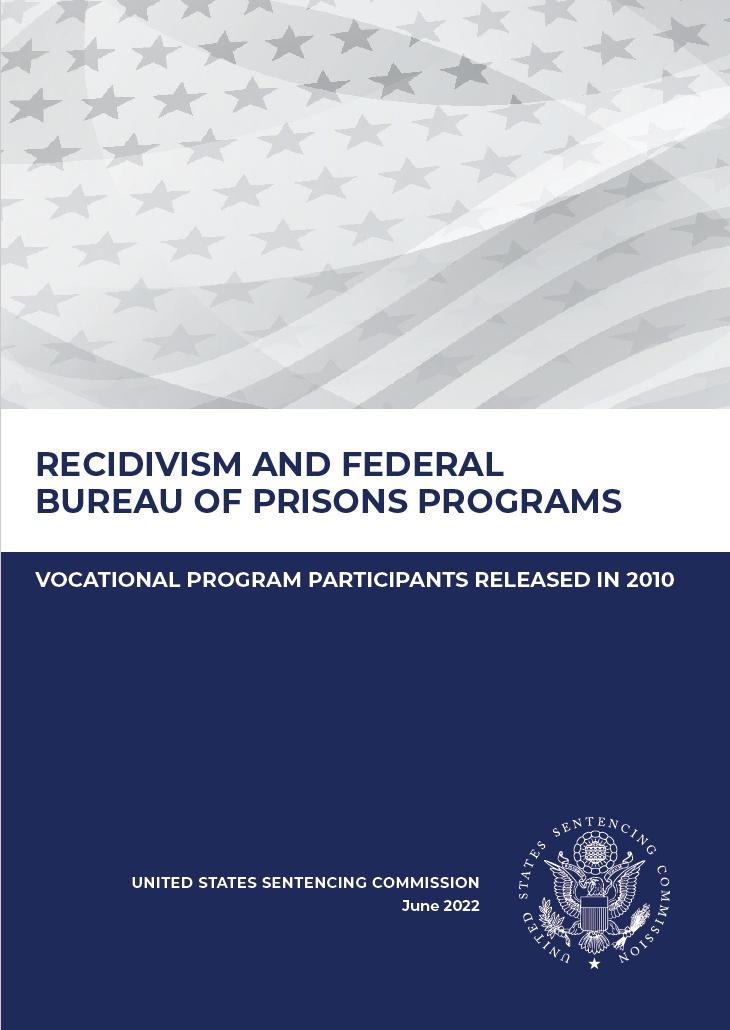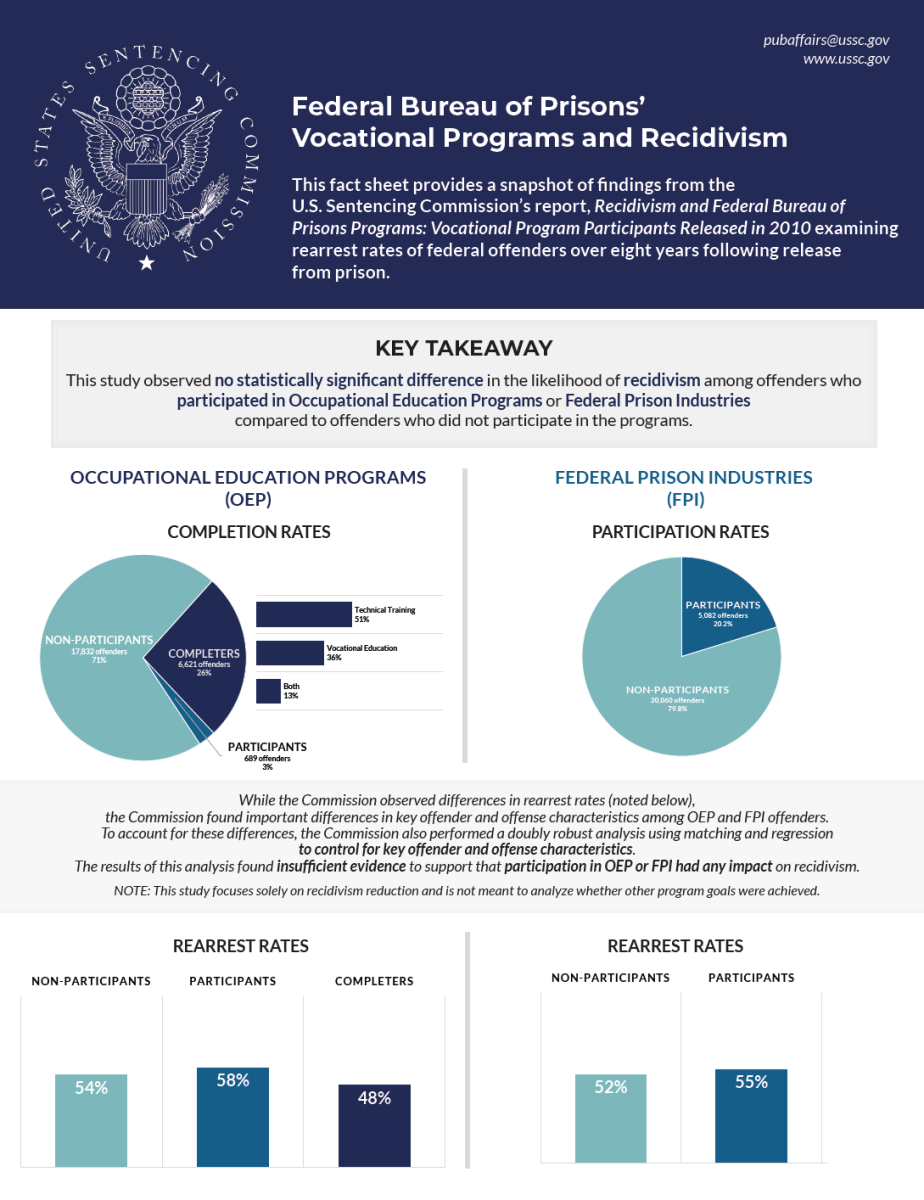Overview
(Published June 14, 2022) This report is the sixth in a series continuing the Commission’s study of the recidivism of federal offenders released in 2010. In this report, the Commission provides an analysis of data on the recidivism of federal offenders who participated in Federal Bureau of Prisons (BOP) vocational programs while incarcerated. The study examines whether completion of vocational programs offered by the BOP impacted recidivism among a cohort of federal offenders who were released from prison in calendar year 2010. The report combines data regularly collected by the Commission, Federal Bureau of Investigation (FBI) criminal history records, and data on program completion and participation provided by the BOP.
In this report, Vocational Program Participants were offenders who participated in one of the following programs:
-
Occupational Education Program (OEP)
- The first group comprises 7,310 offenders who participated in at least one OEP vocational or technical training course.
-
OEP offers a variety of programs where participants can take courses in vocational and occupationally oriented areas for the purpose of obtaining marketable skills.
-
Federal Prison Industries (FPI)
- The second group comprises 5,082 offenders who participated in FPI.
-
FPI provides offenders with work simulation programs and training opportunities through the factories it operates at BOP facilities.
Related Materials:


Key Findings
Occupational Education Programs (OEP)
- Although the recidivism rate for offenders who completed an OEP course was lower than that of offenders who did not participate in an OEP course (48.3% compared to 54.1%), the difference in their recidivism rates was not statistically significant after controlling for key offender and offense characteristics such as criminal history category, age at release, gender, and crime type.
Federal Prison Industries (FPI)
- Although the recidivism rate for offenders who participated in FPI was higher than that of offenders who did not participate in FPI (55.0% compared to 52.0%), the difference in recidivism rates was not statistically significant after controlling for key offender and offense characteristics, such as criminal history category, age at release, gender, and crime type.
NOTE: This study focuses solely on recidivism reduction and is not meant to analyze whether other program goals were achieved.

